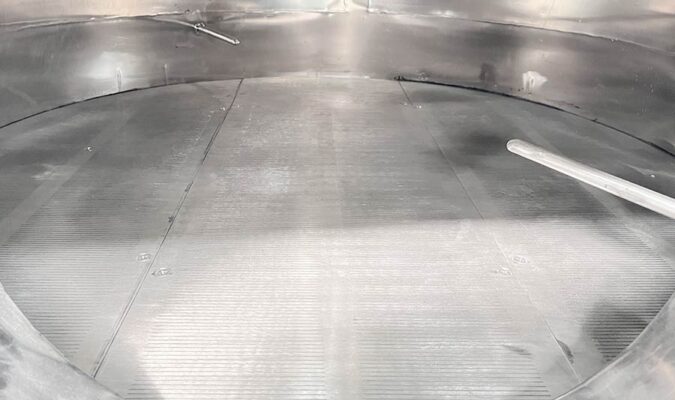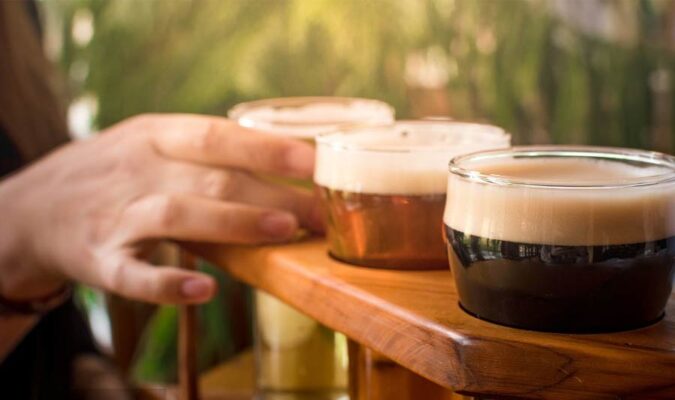One of the first differences that novice brewers may notice between their beers and commercial beers is clarity or lack thereof. After conditioning, clarification, and stabilization, the beer is filtered to remove any residual yeast and to remove precipitated protein and polyphenol clouding material. The key role of filtration in beer brewing is to provide stability. Among these technologies, beer filtration is a crucial step that not only improves the appearance but also makes a significant contribution to the quality and stability of the beer. In this article, we’ll take a deep dive into the importance of beer filtration.
When it comes to beer, one cannot underestimate the power of visual appeal. Clarity of beer is often associated with quality and freshness and the brewer’s attention to detail. Filtration plays a vital role in removing unwanted particles such as yeast, proteins, and sediments that cause cloudiness in beer. By ensuring visual clarity, filtration enhances the appearance of the beer, attracting consumers and creating a positive first impression.
What is filtering?
Filtration is the process of removing solids from liquids by passing through porous media. Filtration effectiveness depends on the particle size and porosity of the filter media. There are two basic types of filtering: depth filtering and surface filtering.
Depth filter
Depth filtration, also known as powder filtration, uses a labyrinth of channels in the filter media to trap particles. The media can be diatomaceous earth (DE), perlite, or other porous media. Depth filtration is often considered coarse or primary filtration, although, in many small breweries, it is the only filtration performed.
Surface filtration
Surface filtration uses membrane materials with pores smaller than the particles to be removed. Particles remain on the surface of the filter as the clarified liquid flows through. Filtration is said to be “absolute” on pore size if the pore size is of a specified size (for example, up to 5 μm). Membrane filtration and cross-flow filtration are examples.

Types of Beer Haze
Any particles of matter that are suspended in the beer and make it less transparent than expected can be called haze. There are two main types of beer haze: those caused by living things (biological) and those caused by everything else (abiotic). Most brewers may wish to distinguish between haze caused by bacterial or wild yeast contamination and haze caused by brewer’s yeast.
Suspended particles in beer
Successful filtering of beer requires an understanding of the different-sized particles present and made up in beer. The purpose of filtration is to remove the vast majority of yeast while retaining enough protein so as not to impact head retention. Although the purpose of filtration or clarification is not to remove hops, hops do stick to the yeast cells. Thus, removing yeast can sometimes result in less hoppy beer.
Yeast
Yeast cell sizes tend to be in the 5-10 micron range, which is why coarse or fine filtration is usually done in the 5-micron range. This is the typical size of a diatomaceous earth (DE or Kieselguhr) filter found in small breweries. This is also a common size for plate and frame filters using disposable filter pads. In professional breweries, DE or pads are chosen based on the tightness of their filter media.
Smog generator
Beer haze is often viewed as a colloidal stability problem. A colloid is defined as “a suspension of finely divided particles in a continuous medium…”. Colloidal stability refers to the absence of two main categories of haze in the finished beer.
- Cold Fog: Haze that forms when beer cools to 32 °F (0 °C) and redissolves when beer is reheated to 68 °F (20 °C) or higher. The particle size is between 0.1 and 1.0 microns.
- Permanent Haze: Haze present in beer at temperatures of 68 °F (20 °C) or higher. The particle size is between 1-10 microns.
Type of filter
- Plate and frame filter: Consists of vertical plates covered with filter cloth or filter mat. Next to the plate is a hollow frame containing the filter aid. They alternate over the entire length of the filter and end in end plates.
- Mesh filter: A hollow mesh sieve (blades) mounted or along a central axis, housed in a cylindrical container. In a process called priming, a mixture of beer (or water) and DE is pumped into the container and recirculated until all the DE is trapped on the screen and the liquid is clear.
- Candle Filters: Candle filters are like stand screen filters, but instead of leaves, they are hollow round tubes with narrow slit openings. Operation is the same, but the increased surface area of the candle allows for faster filtration while using less filter aid.
- Membrane Filters: Membrane filters are made of polymeric materials and trap particles by their uniform pore size. They are capable of producing a very filtered fluid, but go blind.
- Cross-Flow Filtration: Cross-flow filtration improves traditional membrane filtration by pumping liquid across the filter surface, usually sintered alumina. Deposited solids are captured and drained so that the filter surface does not clog. These filters are often designed, but expensive to buy and operate.
Various processing aids and techniques can reduce the amount of suspended solids before filtration, thereby increasing filtration throughput. These include longer cold aging times and fining agents. These can be achieved by settling for acceptable clarity. Larger breweries sometimes use centrifugation as an alternative to filtration.

The Importance of Beer Filtration
Stability and Shelf Life
Beer filtration plays a vital role in stabilizing beer and extending its shelf life. Unfiltered beer contains residual yeast and other microbes that can continue to ferment, causing off-flavors, cloudiness, and possible bottle explosions due to over carbonation. Filtration removes these unwanted elements, preventing further fermentation and ensuring the beer remains stable over time.
Flavor consistency
The quality of filtration affects the flavor of the beer. Removing unwanted particles, it helps cut potential odors caused by yeast, bacteria, or protein mist. Filtration also helps improve the smoothness and mouthfeel of the beer, ensuring a clean, clean taste that allows the nuances of the ingredients to shine through. By achieving batch-to-batch flavor consistency.
QC
Beer filtration is an important quality control measure in breweries. It enables them to remove any visible and invisible impurities that could compromise the taste, aroma, and stability of the beer. By implementing a rigorous filtration process, brewers can ensure that every pint of beer meets their high standards of excellence, providing consumers with a high-quality product. This quality control is critical to building trust with beer lovers who seek unrivaled enjoyment with every sip.
In conclusion
Beer filtration is an integral step in the brewing process, contributing to the quality, stability, and flavor consistency of the final product. The filtration process in beer brewing can vary depending on the type of beer being produced and the size of the brewery. Thus, when designing a beer filtration system, the appropriate filtration method should be selected according to the specific production requirements and site hygiene standards.





Remɑrkable things here. I’m vеry happy to look your post.
Thanks a lot and I’m taking a look forwarԀ to touch
yοս. Will you kindly drop me a e-mаil?